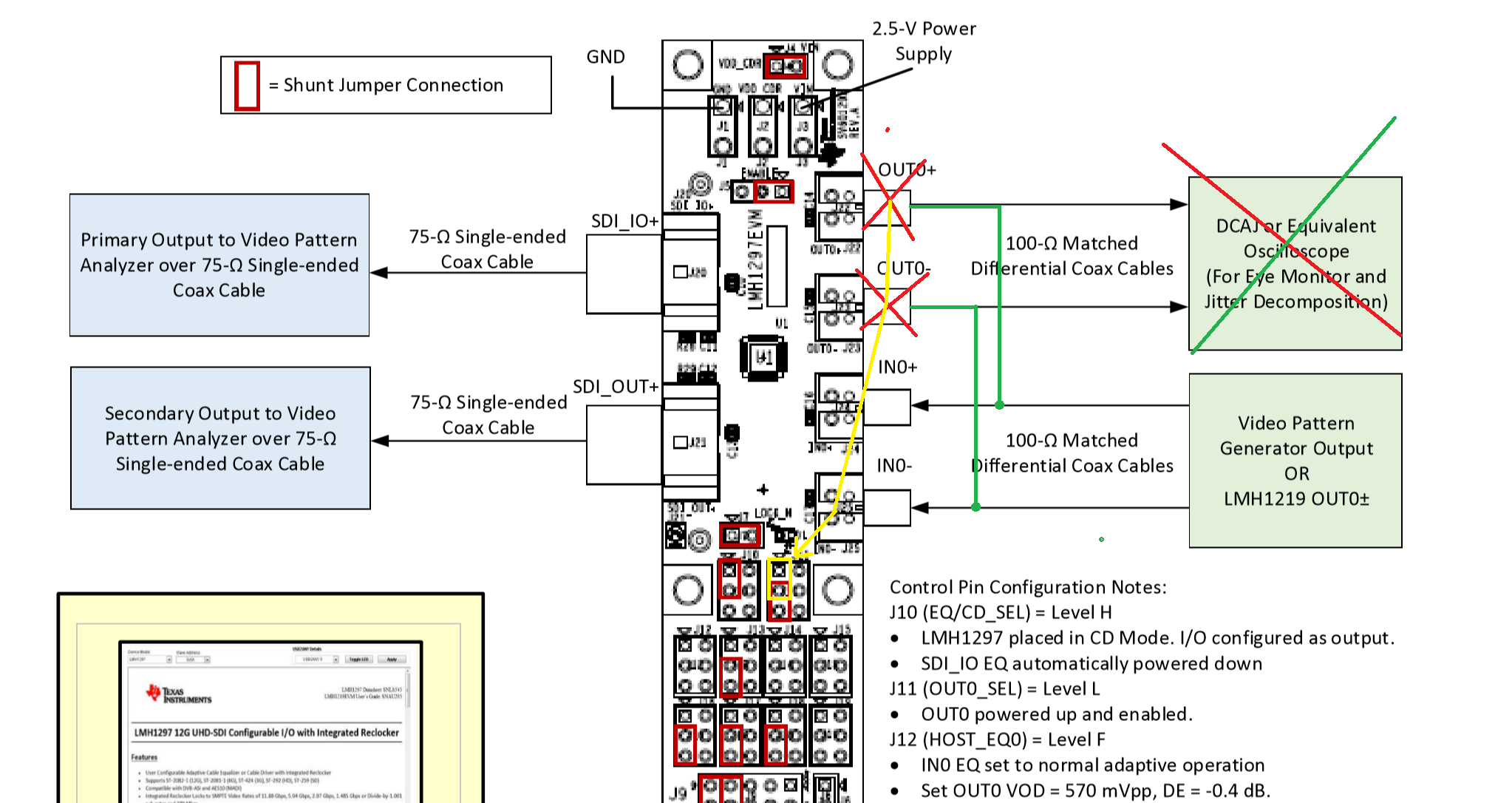Other Parts Discussed in Thread: LMH1297
Hello !
I would like to connect the differential Input IN0+- and output OUT0 +- ports of the lmh1297 in parallel to emulate the sdi IO functionality of the 75 ohm port on the other side of the board.
In the EQ mode ( set by J10 ) the differential IN0 +- are automatically disabled.
In the CD mode ( set by J10 ) both the IN0 and OUT0 are enabled, but J11 can disable the OUT0 port.
Will these disabled ports become high impedance when disabled. I am concerned about a double termination if I parallel the ports.
The circuitry that will connect to the lmh1297 can be either an input or an output on a single differential pair, and will only change at power up.
I hope to use a switch or software to set the card for input or output without the need for external cabling changes or multiplexers.


